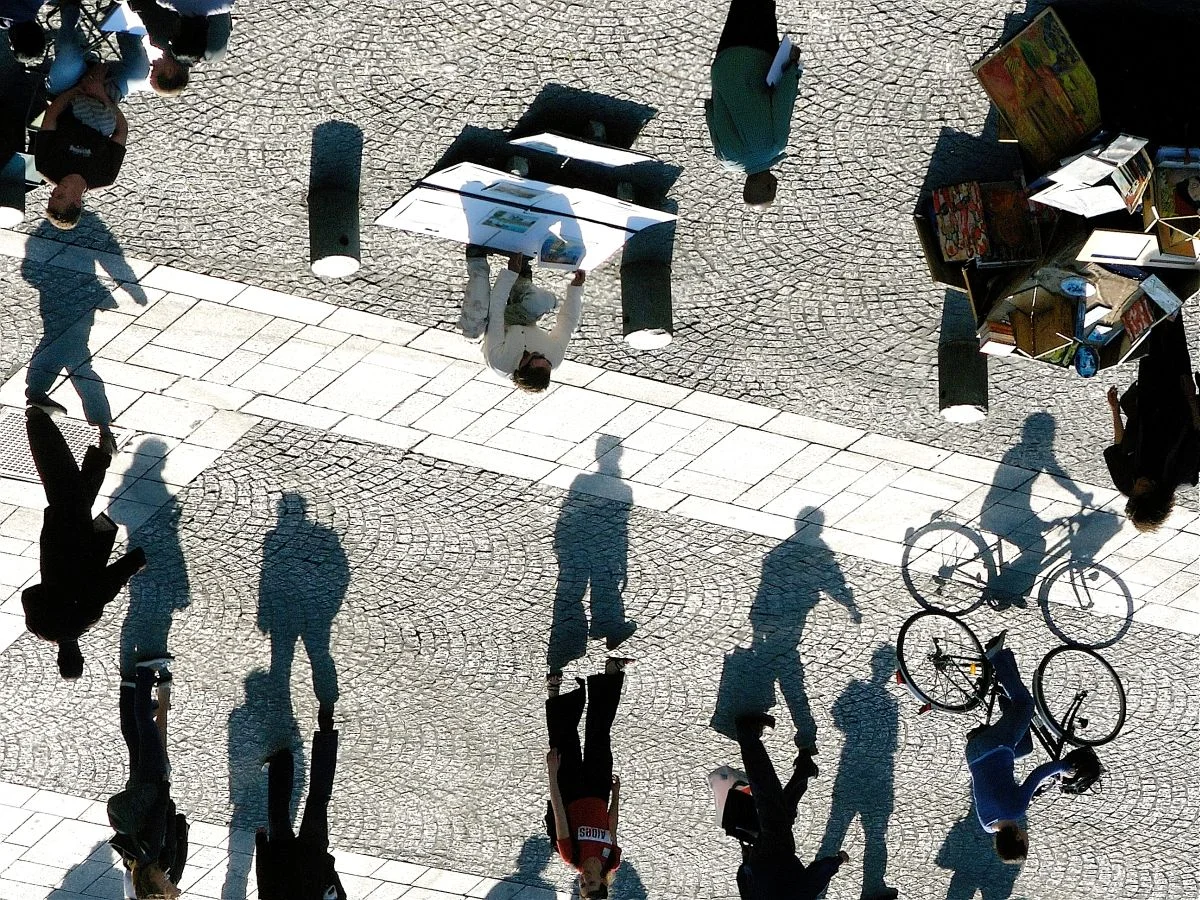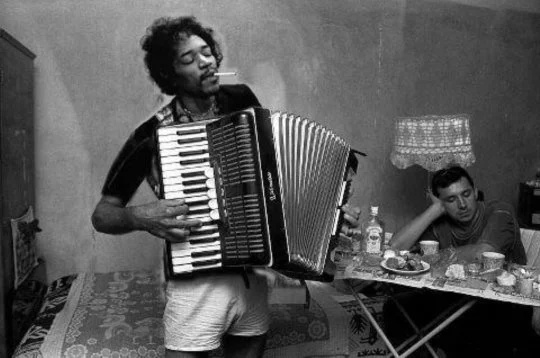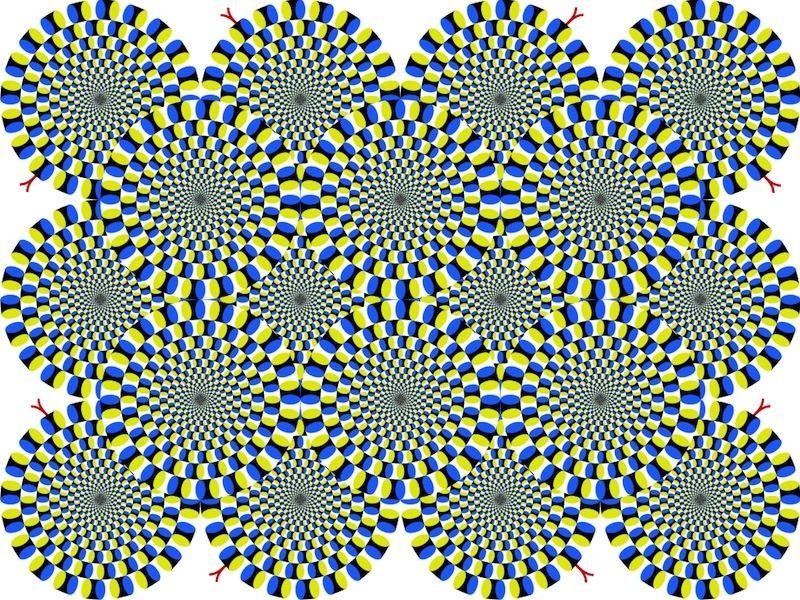By The Landlord
"Feelings are never true. They play with their mirrors." – Jean Baudrillard
"I work from the inside out." – Frank Gehry
“And since you know you cannot see yourself,
So well as by reflection, I, your glass,
Will modestly discover to yourself,
That of yourself which you yet know not of.” – William Shakespeare, Julius Caesar
“I had reached the age of six hundred and fifty miles.” – Christopher Priest, The Inverted World
It's a bewildering thing, being alive, with reality and falsehood, the objective and subjective, our perceptions of truth, beauty, emotions, and everything else, constantly in flux. In his 1998 novel Inversions, writing under his prolific sci-fi persona, Iain M. Banks, wrote: “Truth, I have learned, differs for everybody. Just as no two people ever see a rainbow in exactly the same place – and yet both most certainly see it, while the person seemingly standing right underneath it does not see it at all – so truth is a question of where one stands, and the direction one is looking in at the time.”
With democracy bypassed by a joker PM with the proroguing of parliament, with not even the Queen being bothered to stop Britain getting royally fucked and chucked off the edge of economic precipice by a small group of currency speculators, this week we enter the strange, but fascinating world of the topsy-turvy and the back-to-front, the upside down and the inside out, from reversed or mirror images to the refracted or distorted, reflected or projected to eyes and ears through all kinds of prisms, and in particular through songs lyrics, literally or metaphorically.
Don’t look now, we’re at the precipice
But, aside from the current crisis, seeing the world from a topsy-turvy perspective can be highly beneficial. I recall at school being very intimidated by our science teacher. He was gruff, rude, aggressive, brash, impatient, and insensitive. He was inflexible to pupils' varying abilities or needs. He only did things within his own narrow methods and to please himself. He was a terrible teacher, and could even be downright nasty and vindictive. He also liked to referee football matches. But one day, during a game, I ended up on the ground after a tackle, and even though he was shouting at me to get up, I found myself staring at him in amazement. He was a thick set, balding man with a bushy beard, but looking at him upside down, he suddenly became an absurd, comical figure, his face reversed, with that bald pate now silly, wrinkly chin, and that beard was now a comical bush of hair sprouting and sticking upwards, a bit like that of Stan Laurel. The effect was a bit like this:
Oops: upside down faces can change your view of someone
So looking at things upside down, or even inside out can be a game-changer, and also part of the creative process. After all, when songwriters, or any other kind of artists, wrestle with feelings or ideas, what they do is express something that comes from the inside out. Art is a processing of understanding the mysterious, from what comes within us. So the upside down or inside out can sound distorted or blurred but it could in turn be a source of clarity.
The songwriter Nick Lowe tells us that "You've got to really know your song, inside and out," to truly perform it well, and so inside-out can be a place of sublimity and calm as much as confusion.
Refracted that a little, Tom Waits tells us that "I guess I've always lived upside down when I want things I can't have," and he has always sought out different ways to write songs when struggling for ideas. Meanwhile, also wanting to get on the act here, Robbie Williams has swanned into the Bar, to crack open this old one, not entirely on topic: "Inside me there is a fat man dying to get out." Perhaps he has finally arrived.
But upside down didn’t do any harm to guitarists Dick Dale and Jimi Hendrix. The former says: “I learned everything by ear and played all the different instruments. So then I was able to find a guitar. That was, like, in the seventh grade. And then I didn't know how to put my fingers on all the different strings, so I had to figure out how to do it upside down and backwards, and I still play that way today.”
He continues, making comparisons with the great Jimi: “Hendrix was the bass player for Little Richard. We were both left-handed, but we would use a right-handed guitar held upside down and backwards. He developed my slides and my riffs. In fact he used to say, and this is documented, 'I patterned my style after Dick Dale.
As influential as Dale was, and putting Dick’s not inconsiderable self-regard to one side, independent of him or anyone else, Hendrix’s talent and method was unique. It is true that Jimi was a natural left-hander, but learned to play right-handed because his religious father regarded left-handed playing with fervent suspicion, so the young James learned right-handed too, but was able to switch when Dad wasn’t looking, and in the 1960s, when lefty guitars weren’t so easy to come by, he would string a right-handed guitar to correspond with left hand playing, hence the “upside down” ability that certainly contributed to him being able to play it inside out. It also allowed him to play the right-handed accordion upside down:
Jim Hendrix: inverted accordion as well as guitar
Something incredible, and beautiful came out of Hendrix’s topsy-turvy, upside-down learning methods. Now on a different angle, and entering our Bar is fashion icon Donatella Versace, surrounded by her entourage, who stop with rapt attention when she announces, to great applause, "Let's just say beauty inspires me. But I like all beauty - I think it really comes from the inside out." She's still checking herself in the mirror, and perhaps that's a clue to where we go next.
Mirrors will certainly feature in this week's topic, but not as objects or in passing, but this week’s topic is only on the image that create, when that is inverted or distorted from from the original. "If art reflects life, it does so with special mirrors,” said Bertolt Brecht. “Well,” adds his friend, film director Jean Cocteau, joining alongside his beer with a cocktail, who then jokes that “Mirrors should reflect a little before throwing back images.” He probably wasn’t talking about the sort that you see in some old fairgrounds:
Mirror, mirror … who is the squarest of them all?
We’ve already heard from Shakespeare and the role of the mirror in Julius Caesar, revealing more of the self that just the image, but no example is more famous than of Hamlet, who tells actors putting on the play within the play, to "Speak the speech” and therefore act in such a way as it shows up a truer reflection, or something of themselves to his mother Gertrude and her new husband Claudius, who has taken his father's place in this portrayal of his murder. Of course it all goes wrong, even though the aim is to hold a “mirror up to nature”.
“Be not too tame neither, but let your own discretion
Be your tutor: suit the action to the word, the
Word to the action; with this special o'erstep not
The modesty of nature: for any thing so overdone is
From the purpose of playing, whose end, both at the
First and now, was and is, to hold, as 'twere, the
Mirror up to nature; to show virtue her own feature,
Scorn her own image, and the very age and body of
The time his form and pressure.”
Hamlet constantly plays with, and is driven mad by what is perceived to be the truth. And yet is we look at the world from a visual perspective, a ‘real image’ as it called is one that is upside down, inverted the process of optics, the images produced on the detector in the rear of a camera, and the image produced on an eyeball retina, or via concave mirrors and converging lenses.
Life is real, through a lens
Of course there are plenty of upside-down examples to be found not on lenses, but in reality, such as this house in Brighton:
Brighton house. Where’s the front door?
Though in terms of architecture, nothing quite compares to the out-of-box thinking of Frank Gehry, and his many creations around including the Guggenheim in Bilbao:
Frank Gehry’s Guggenheim in Bilbao
Some upside downs are naturally occurring. Take a look at how these trees grow at this Kazakhstan’s freshwater Lake Kaindy in the Tian Shan Mountains, created by a 1911 earthquake, submerged fir trees grow in what appears to up an upside-down direction:
Lake Kaindy in Kazakhstan
A lake of course is another form of distorting mirror, but of course another way, for the world, or perception of the world to become topsy-turvy, is through drugs. “Substances are like mirrors that let us see things about ourselves that we cannot quite understand,” says James Elkins, American art historian, and whether or not via naturally occurring, we can certainly see that in work of the Surrealists from Dali to Magritte. Meanwhile there are no shortage of other topsy-turvy creations beyond the painted form, ones that play with our perceptions. Here are a couple, the peripheral illusion, in which circles seem to turn when we don’t look directly at the image:
A still image creating peripheral drift
A few years ago there was much debate about this dress, whether it was black and blue or white and gold. It’s all a matter of context:
It’s that dress again
And then there’s the Ames room, first invented by American ophthalmologist Adelbert Ames, Jr. in 1934. This room toys with our brain’s sense of perspective with sloping floors and angled ceiling:
Meanwhile 3D Street Art is perhaps some of the most astonishing forms of popular work to play with our perspective:
In the literary world, perhaps no world is strange or distorted as that portrayed in the novelist Christopher Priest’s The Inverted World (1974), a re-imagined planet, perhaps cone-shaped, and in a city called “Earth” which is slowly being winched along at at 0.1 miles per day on four railway tracks northward toward an ever-moving, mysterious "optimum". The sun is disc-shaped, with two spikes extending above and below its centre, and the main character, engineer Helward, and others, perceive, measure and experience bizarre forms of distortion of time and distance, including how people become taller or wider depending on which direction they travel, such one instances where people widen so much they simply become lines merging with the horizon. One cover expresses the idea with the famous Möbius strip:
Follow your way around this …
So then, what strange odyssey might this topic take us on in song form? No spoilers, but might take us inside and round about from London to Delhi, Detroit to New York, or maybe Lincoln, Massachusetts. To kick things off, here’s on this sample from They Might Be Giants, and Upside Down Frown:
When I'm with you the landscape goes all weird
Black is white and the rainbow has a beard
Are your eyes playing tricks
Or should you get your glasses fixed?
Well, I don't think your eyesight is to blame
The problem is my frown
Is upside down
It's upside down my frown
Is upside dow
My frown's upside down
The artist Anish Kapoor captures the idea of inversion with one particular colour: “Red, of course, is the colour of the interior of our bodies. In a way it's inside out.” So to close, let’s enjoy a little bit of comedy inside outness from the Simpsons, and Treehouse of Horror V, where referencing another horror film, The Thing, things get foggily distorted:
Turning things the right way round again, or perhaps inverting them even more with no doubt fiendishly clever perspectives is this week’s guest playlister, the excellent EnglishOutlaw. Place your inverted perspective songs in comments below for deadline on Monday last orders at 11pm UK time, for playlists published on Wednesday. Commence fun the let.
New to comment? It is quick and easy. You just need to login to Disqus once. All is explained in About/FAQs ...
Fancy a turn behind the pumps at The Song Bar? Care to choose a playlist from songs nominated and write something about it? Then feel free to contact The Song Bar here, or try the usual email address. Also please follow us social media: Song Bar Twitter, Song Bar Facebook. Song Bar YouTube. Subscribe, follow and share.












